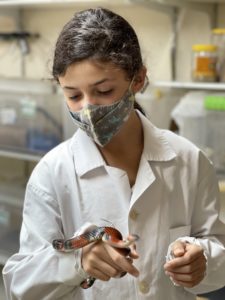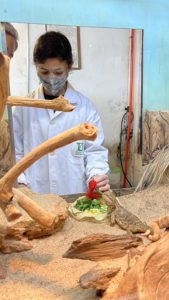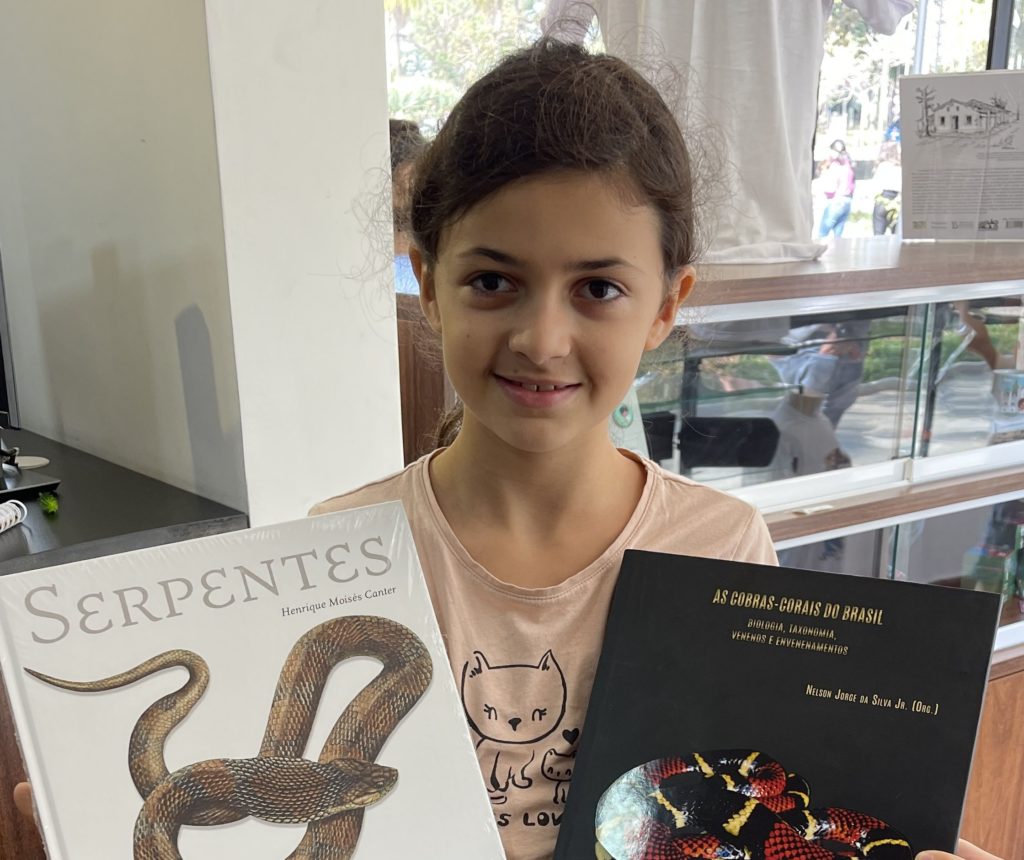By Zana Bonafe*
There is nothing new in snakes earning a bad reputation. From Cleopatra’s suicide to Medusa’s killing power, snakes have long been associated with death and horror. Hollywood movies that portray them as monstrous reptiles, like Anaconda and Snakes on a Plane, are not an exception. In literature, the Harry Potter series cemented in millions of youngster’s minds the idea of a serpent as the ultimate evil with Nagini, one of Voldemort’s Horcruxes and the Dark Lord’s most loyal companion.

Despite all of this, a 10-year-old Dubai resident claims she loves these creatures. ‘I find them cute’ she says, when asked about serpents. It was through her love for these reptiles that my daughter Maya Azeredo-Badreldin, a grade 5 student at NLCS Dubai, secured an internship at the renowned Butantan Institute.
The Brazilian Institute, created in 1901, is the largest immunobiologicals and biopharmaceuticals producer in Latin America and one of the largest centers of biomedicine research in the world. It is world-renowned for its collection of venomous snakes, as well as those of venomous lizards, spiders, insects and scorpions. By extracting the reptiles’ and insects’ venoms, the Institute develops antivenoms and medicines against many diseases, which include tuberculosis, rabies, tetanus and diphtheria.
Inside the Butantan is located the Biology Museum, where dozens of rescued, and very much alive reptiles and amphibians live. They play an important role in the institute’s research as well as being the main educational attraction for the thousands of children who visit the museum every year. The children can observe the animals on display through thick viewing glasses but Maya had the opportunity to spend quality time behind the scenes with the biologists, scientists and veterinarians who oversee the care for these animals.
Maya Azeredo-Badreldin, a Brazilian-British-Egyptian national that was born and raised in Dubai, became the first child to do an internship at the Biology Museum, where she cleaned the serpents’ enclosures, fed lizards, snakes and frogs, learned about scenario design and species classification with the museum’s director dr. Giuseppe Puorto and even bathed a couple of bearded dragons.
Maya has been interested in animals from a very young age and became an expert in snakes a couple of years ago. Self-taught, she can explain in detail, and with great enthusiasm, the genetic breeding of the different morphs of ball pythons or the system of feeding each animal. ‘Snakes can go many weeks, even months without eating. They tend to go into a hibernation stage before changing their skin or after a meal,” she says with confidence. The invitation for the internship came via the institute’s strategy director Cintia Lucci with the support of Cris Mantovan.

As part of her experience, Maya also spent time in the veterinarian department, learning about the different snake diseases, how to tell if a snake is male or female – in most cases impossible through naked eyes – and the process of quarantine for rescued animals. She handled the animals with expertise, including large tarantulas and the gigantic Madagascar cockroaches. But her favourite were the snakes. Boas, Burmese pythons, Ball pythons, beauty-snakes, coral-snakes, corn-snakes and dozens of other species. The venomous reptiles were observed only, but for all the non-venomous species, Maya was hands-on, literally.
The last part of her experience included being an educator for a day, learning how to communicate with the public about the importance of these animals in balancing our ecosystem.
“I don’t understand why people are afraid of them. As any other wild animal, they do not attack humans or other animals out of evilness.” Maya says. “Snakes are solitary animals, who like to be kept alone in a dark hiding place for most of the time. They only bite to defend themselves or if they are hungry and identify a prey.”
Maya is the caregiver of a 7-year-old ball python of about 1,2m that she adopted. The snake is a male named Twig, and lives in our family’s living room, amongst their other animals. She is deeply interested in zoology and is part of the science club at her school. When asked about her plans for the future, Maya says she is undecided between biology, zoology and veterinary. With still a long way to go before she can decide on a profession, one thing is certain: the youngest intern of Instituto Butantan dreams about animals almost every night.
The biology museum at Butantan is located in the city of São Paulo, Brazil and is open for visitation daily except on Mondays. It has a serpentarium, a venom farm, a historical museum, a biological museum, and a museum of microbiology.
Zana Bonafe is a writer and author resident in the UAE.
The opinions expressed in the articles are those of the authors.




